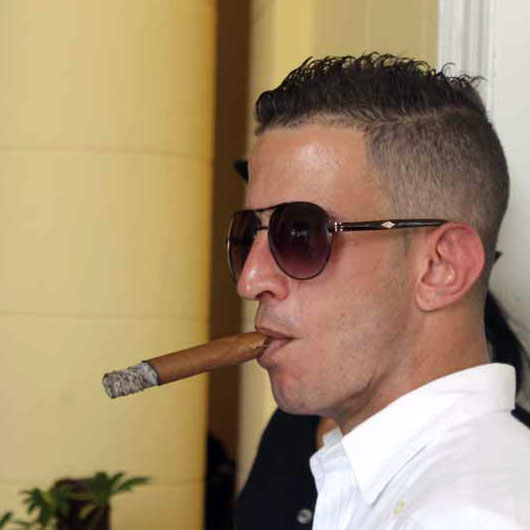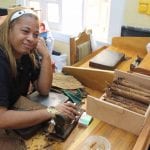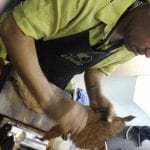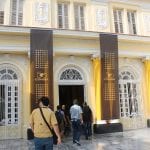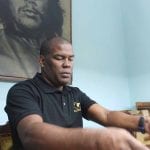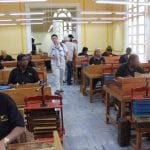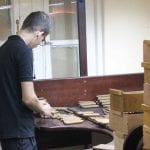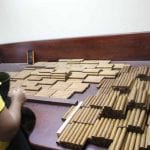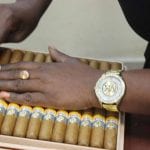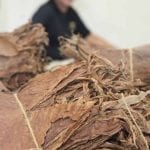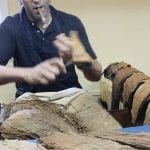The cigar industry continues to thrive in Cuba, with or without the possible opening of the U.S. market.
By Timothy S. Donahue
It’s Cuba; it’s complicated. To the first-time visitor, it seems that even the simplest of tasks takes forever, and no one is rushing anywhere. It’s relaxing and frustrating simultaneously. Having any sort of schedule is pointless. One of the most famous cliches in the country is “todo mañana” (everything tomorrow). That “tomorrow” may never come.
Cuba will do things Cuba’s way and in Cuba’s time. It seems the only thing moving rapidly on the island nation is the growth of its world-famous cigar industry. In March, executives from Habanos, Cuba’s state-controlled cigar company, told Tobacco Reporter that revenues reached $428 million in 2015, an increase of 4 percent over the previous year. During the 18th Festival del Habano, which is held every year in Havana, Leopoldo Cintra Gonzalez, commercial vice president of Habanos, said the increase in demand proves the strength of Cuba’s brands in the global marketplace. This year, the country celebrates the 50th anniversary of the launch of Cohiba, its most prestigious brand.
Habanos officials declined to speculate about when the U.S. market would open for Cuban cigars or what percent of market share they could expect. “The United States is the largest premium cigar market in the world,” said Javier Terres de Ercilla, vice president of development for Habanos. “We really can’t speculate about things that have not happened yet.” The company had previously reported that it could sell as many as 90 million cigars annually in the U.S. if the half-century-old trade embargo ended, according to a Reuters article. A company official had then said Habanos brands could have a market share between 25 to 30 percent in the U.S. “And some might consider that figure a little conservative,” he added.
Habanos’ market share worldwide, with the exception of the U.S. market, is “way over 70 percent in volume and 80 percent in value … in more than 150 countries,” according to Habanos co-president Inocente Nunez Blanco. After his keynote speech at this year’s festival, Blanco said the opening of the U.S. market would “undoubtedly open up a great opportunity because the U.S. accounts for approximately two-thirds of the world’s premium cigar market.”
During the festival, the company revealed that, last year, its top five markets were, in order, Spain, France, China, Germany and Switzerland. Sales in the European region led international sales with 55 percent. That was followed by the Americas (including Cuba) at 16 percent. The Africa/Middle East region and the Asia/Pacific region both held 15 percent. The best-selling brands in 2015 were Cohiba, Montecristo and Romeo y Julieta, with the Partagas Serie D No. 4 and Montecristo No. 2 topping the charts on a per-stick level, according to Habanos.
A recent hurricane, followed by severe drought, has raised concern about the 2015–2016 tobacco growing season. But even as the fluctuating and atypical weather patterns have made things difficult, Terres de Ercilla said this year’s leaf is looking “exceptionally” good. “We had drought when it should have rained and heavy rains when it should have been dry,” he said. However, precautions, such as using special seed varieties, were taken during field preparation, according to Terres de Ercilla. He insisted that the difficulties would not adversely affect either the quantity or the quality of tobacco harvested.
Tobacco heritage
Cuba has a long history with the golden leaf. It is impossible to state exactly when tobacco was brought to Cuba; however, it is believed that it happened between 3000 and 2000 B.C. Historians affirm that the first plantations arose in the 18th century. For Cuban natives (who called it cohiba), tobacco was a miraculous medicine, an essential element in religious, political and social ceremonies. The Cuban archipelago is very close to the Tropic of Cancer. Its western region—where the world’s best tobacco is grown—has a relative humidity of 79 percent, an average annual temperature of 25.25 degrees Celsius (77.45 degrees Fahrenheit) and a particularly favorable amount of rainfall.
In addition to these climatic features, the chemical composition and agricultural properties of the soil in Cuba’s tobacco growing areas are among the world’s best. There is also the experience and care that Cuba’s tobacco farmers and manufacturing personnel put into each of the numerous steps involved in producing a Habano. These steps are absolutely necessary to maintain the product’s top quality.
While visiting Pinar del Rio, Cuba’s westernmost region, Tobacco Reporter was able to take a closer look at the mythical tobacco plants that become Habanos cigars. Maximo Perez Maseda, one of Vuelta Abajo’s most prominent tobacco plantation owners, said it was a challenging year as he and his workers fought to keep their farmlands in optimal condition. “We are always trying to cope with the damage caused by unexpected and unusual rainfall this year,” he said. “No matter. I enjoy every single element related to tobacco, including smoking.”
Maseda isn’t alone. In 2007, a Gallup survey revealed that 40 percent of the population in Cuba smoked. Figures from the Cuban government in 2012 confirmed that as many as four out of every 10 Cubans use tobacco, compared with between 60 to 70 percent in the 1970s. According to a survey conducted by the Cuban Ministry of Public Health in 2014, three out of every 10 men are smokers and 16 percent of all Cuban women smoke. The study also revealed that smoking is least common among university students, while people 40 to 50 years old constitute the country’s largest group of smokers. Cuba’s overall population has increased to more than 11 million today from around 7 million in 1961.
The Cuban people have an ingrained tobacco culture and are proud of their world-famous cigar industry. It is getting more difficult to smoke in the country, however, as authorities began phasing out the tobacco ration (monthly handouts of heavily subsidized cigarettes) in the 1990s and fully eliminated it in 2010. Since 2005, Cubans have been banned from smoking in air-conditioned areas, offices, schools and sports centers.
Cuban authorities are currently working on new anti-tobacco legislation with even tougher restrictions than exist today. In addition to reiterating provisions that forbid smoking in enclosed spaces and the sale of tobacco products to people younger than 18, the proposed legislation would restrict tobacco promotions and sponsorships, along with the sale of single units or packages with fewer than 20 cigarettes. The newly proposed regulations would also raise the prices of tobacco products.
Currently, all tobacco products are tightly controlled by Cubatabaco, the state tobacco monopoly.
Continuously Cuban
The Habano is one of a kind. The heart of the Cuban cigar is in the tobacco and its taste. Other countries may have tried to mimic the product, recruiting skilled rollers and planting Cuban seeds, but they can never copy the natural gifts of the Cuban soil and climate. These factors, combined with the centuries-old culture and knowledge of cultivating tobacco and producing cigars, help the Habano remain the benchmark for excellence.
Nothing is more Cuban than its cigars. Fidel Castro was rarely photographed without his trademark cigar, and Winston Churchill’s love of Romeo y Julieta was such that the Cubans named a long, fat variety after him in 1947. U.S. President John F. Kennedy preferred H. Upmann and so craved Cubans that he stockpiled 1,200 Petit Upmanns before signing the U.S. trade embargo against the island in 1961.
Habanos has been working for years developing new markets for its cigars. It’s an effort to both ramp up sales and spread the Habano culture among its present and future customers. “The outcomes can’t get any better,” according to company co-president Luis Sanchez-Harguindey Pardo De Vera. “We’re referring to markets in the Asia/Pacific region, in the Middle East, as well as in Eastern Europe and Latin America,” he said. “In the well-established markets, our goal is to keep the market share and maximize our business profitability.”
In anticipation of possible U.S. sales, Blanco said the industry has been increasing tobacco cultivation areas by preparing new fields and recovering former tobacco plantations. “Efforts are also underway to develop new tobacco plantations in central Cuba to complement Vuelta Abajo, and investing in new farming for the planters,” he said. “All of this is part of a development program that will also comprise the final manufacturing stage, by training cigar rollers and even making more room in the cigar factories.”
Puffing on a good Habano is an experience full of charm. It takes technique, elegance and knowledge to fully appreciate the world’s finest cigars. When combined, these elements put a spin of exclusivity and glamour on the consumers who smoke them. Viewed from this perspective, the question of whether the U.S. allows Cuban imports doesn’t really matter. Habanos cigars will continue to be popular worldwide. However, if the U.S. does ease trade restrictions on Cuba, it would be a huge boon for the mythical cigars.
The mythical Cohiba
There are numerous Cuban cigar brands under the Habanos umbrella. The crown jewel of the Cuban cigar industry, though, is the Cohiba, which celebrates its 50th anniversary this year. The key to the prestige of the Cohiba is much more than exclusivity. There is a long and thorough process to producing a Cohiba cigar, a process that begins with the selection of the finest seeds, as well as a complex farming procedure.
The Cohiba name was coined in 1966 by Cuban heroine Celia Sanchez Manduley; Cuba’s native people used the term to refer to the rustic roll of tobacco leaves they smoked. The Cohiba cigar evolved from the cigars that cigar rollers were rolling for themselves. The Cohiba Lanceros were the cigar of choice for former Cuban President Fidel Castro, who would also give them as personal presents to visiting dignitaries. They were not called Cohiba at the time, however; instead the cigar band bore the name of the recipient.
One of the main features of the Cohiba brand is the use of the highest-quality tobacco harvested in the finest plantations of Vuelta Abajo, the best cigar tobacco growing land in the world and the main source of tobacco for Habanos. This region grows all types of tobacco leaves, but less than a quarter of the area has the status to grow tobacco for Habanos.
The soft-colored, light-textured wrapper leaf used in the Cohiba is from the El Corojo plantation. For filler, Cohiba uses the best sun-grown leaves from prominent growing areas. Cohibas are also known for their “third fermentation” (in addition to the typical double fermentation), which lends the cigars an even smoother, rounder flavor. This fermentation takes place in barrels and continues exclusively in the production of Cohiba tobaccos. This third fermentation is coupled with a top-secret aging process.
Currently, there are four lines of Cohiba cigars. The latest and most exclusive Cohiba is the Behike (BHK). Often referred to as the “world’s most expensive cigar,” the BHK is named after sorcerers from the ancient Cuban Taino tribes who would use tobacco smoke to generate an ecstasy trance that let them talk to their gods. The Cohiba brand is produced by hand at the larger-than-life El Laguito cigar factory in Havana.
During an exclusive tour of El Laguito, Tobacco Reporter experienced firsthand where Cohiba cigars were originally rolled and where the diplomatic Trinidad cigar was born. From the sidewalk outside the gates, El Laguito looks more like an old mansion than a cigar factory, with its royal palm trees, marble columns and high-arched windows. Its egg yolk-yellow exterior extends to the interior, where it gradually fades into a lighter shade of yellow. Once passing through the large glass entranceway, visitors to the legendary factory are greeted by a grand staircase with an immense logo of the word “Cohiba” emblazoned on the wall.
Beside the sweeping spiral staircase in the lobby are two smaller salons furnished with rolling tables on either side of the main foyer. What used to be a dining room or parlor is now the place where the world-renowned Cohibas are rolled every day. This is much different from the large, open rolling rooms you see in cigar factories in other countries. One might think that the smaller spaces would make each rolling room feel stuffy and cramped, but the tall windows let in a lot of light, which gives the area an open, airy feel.
While most visitors on this special tour were rushed through, Tobacco Reporter was able to experience the factory at leisure. There was never a question or worry if we wanted to linger a little or take a closer look at the leaf strippers, rollers and quality controllers that filled the factory floors. The fermentation rooms and aging rooms, however, were off-limits to everyone.
The Cohiba is a legend in the cigar industry. As it celebrates its 50th year, its reputation continues to grow. In fact, the status of the Cuban cigar in general dates back to at least the 1600s and has endured thanks to a combination of geography, skill and a great deal of hype. While there may be plenty of arguments that cigars from the Dominican Republic, Honduras, Costa Rica or Nicaragua are just as high in quality, none of them carry the tradition and history that is rolled into every Cohiba.—T.S.D.

